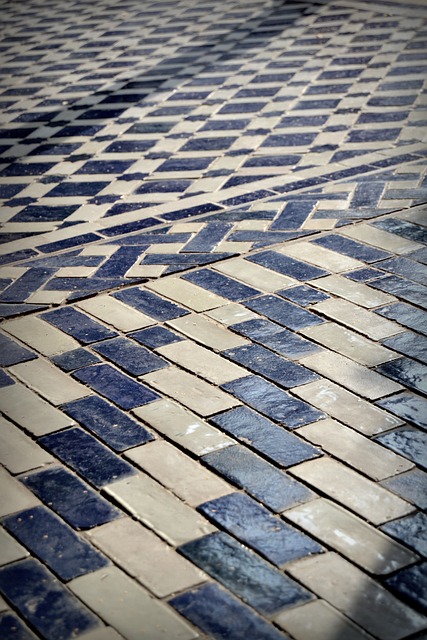When it comes to flooring that combines timeless elegance with modern durability, polished terrazzo floors stand out as a premier choice. With their rich history and versatile application, terrazzo flooring has evolved into a sophisticated option for both residential and commercial spaces. In this comprehensive guide, we’ll explore the benefits, installation process, and maintenance of polished terrazzo floors, helping you understand why they might be the perfect fit for your next project.
What is Polished Terrazzo Flooring?
Polished terrazzo floors are a type of composite flooring made from a blend of marble, granite, quartz, or glass chips set in a cement or epoxy binder. The mixture is poured onto a surface and then ground down to reveal the decorative chips. The final step involves polishing the surface to achieve a high-gloss finish. This process not only highlights the beauty of the aggregate but also creates a durable, low-maintenance flooring solution.
The history of terrazzo dates back to ancient civilizations, where it was used in flooring and decorative elements. Today’s polished terrazzo floors, however, incorporate advanced technology and materials, offering improved performance and aesthetic appeal.
Why Choose Polished Terrazzo Floors?
1. Aesthetic Appeal: One of the most significant advantages of polished terrazzo floors is their aesthetic flexibility. Available in a wide range of colors, patterns, and aggregate types, terrazzo can be customized to match any interior design scheme. Whether you’re looking for a sleek, modern look or a classic, vintage feel, terrazzo can be tailored to suit your preferences.
2. Durability: Polished terrazzo floors are renowned for their durability. The grinding and polishing process creates a hard-wearing surface that can withstand heavy foot traffic and resist scratches and stains. This makes terrazzo an excellent choice for high-traffic areas such as commercial spaces, public buildings, and residential homes.
3. Low Maintenance: Maintaining polished terrazzo floors is relatively simple. Regular sweeping and occasional mopping with a mild detergent are usually sufficient to keep the floors looking pristine. Unlike some other flooring options, terrazzo doesn’t require frequent refinishing or replacement, making it a cost-effective choice in the long run.
4. Eco-Friendly: Terrazzo flooring is also an environmentally friendly option. The use of recycled glass and other sustainable materials in the aggregate mix contributes to its eco-friendly credentials. Additionally, the longevity of terrazzo floors means less frequent replacements, which reduces waste over time.
5. Versatility: Polished terrazzo floors are incredibly versatile and can be used in a variety of settings, including residential homes, commercial establishments, and institutional buildings. The ability to create custom designs means that terrazzo can be tailored to suit both contemporary and traditional interiors.
The Installation Process
Installing polished terrazzo floors involves several key steps, each crucial to achieving the final high-quality finish.
1. Surface Preparation: The installation process begins with preparing the substrate. The surface must be clean, dry, and level to ensure proper adhesion of the terrazzo mix. Any existing flooring or coatings need to be removed, and the substrate may need to be repaired or smoothed out.
2. Mixing and Pouring: Next, the terrazzo mix is prepared. This involves combining the aggregate (marble, granite, quartz, or glass) with a binder, which could be cement-based or epoxy-based. The mixture is then poured onto the prepared surface and spread evenly.
3. Grinding: After the terrazzo has set, the surface is ground down to expose the aggregate. This step requires specialized equipment and skill to ensure a smooth, even surface.
4. Polishing: The final step is polishing, where the terrazzo surface is buffed to a high gloss. This process enhances the appearance of the aggregate and provides a smooth, shiny finish.
5. Sealing: A sealant is applied to protect the terrazzo and enhance its durability. This step helps to resist stains and moisture and ensures the longevity of the flooring.
Maintenance Tips
While polished terrazzo floors are low-maintenance, a few simple practices can help preserve their beauty and longevity:
1. Regular Cleaning: Sweep or vacuum regularly to remove dust and debris. Mop with a mild, pH-neutral cleaner to keep the surface clean. Avoid harsh chemicals that can damage the terrazzo.
2. Spills and Stains: Wipe up spills promptly to prevent staining. For tougher stains, use a terrazzo-specific cleaner or consult a professional.
3. Avoid Scratching: Place mats or rugs in high-traffic areas to protect the surface from scratches caused by dirt and grit. Use felt pads under furniture legs to prevent damage.
4. Periodic Maintenance: Consider periodic professional polishing and sealing to maintain the gloss and protect the surface.
Conclusion
Polished terrazzo floors offer an exceptional blend of style, durability, and low-maintenance convenience. Their rich history and modern adaptability make them a standout choice for a variety of applications. Whether you’re renovating your home or designing a commercial space, polished terrazzo floors provide a beautiful and practical solution that can elevate any interior.


